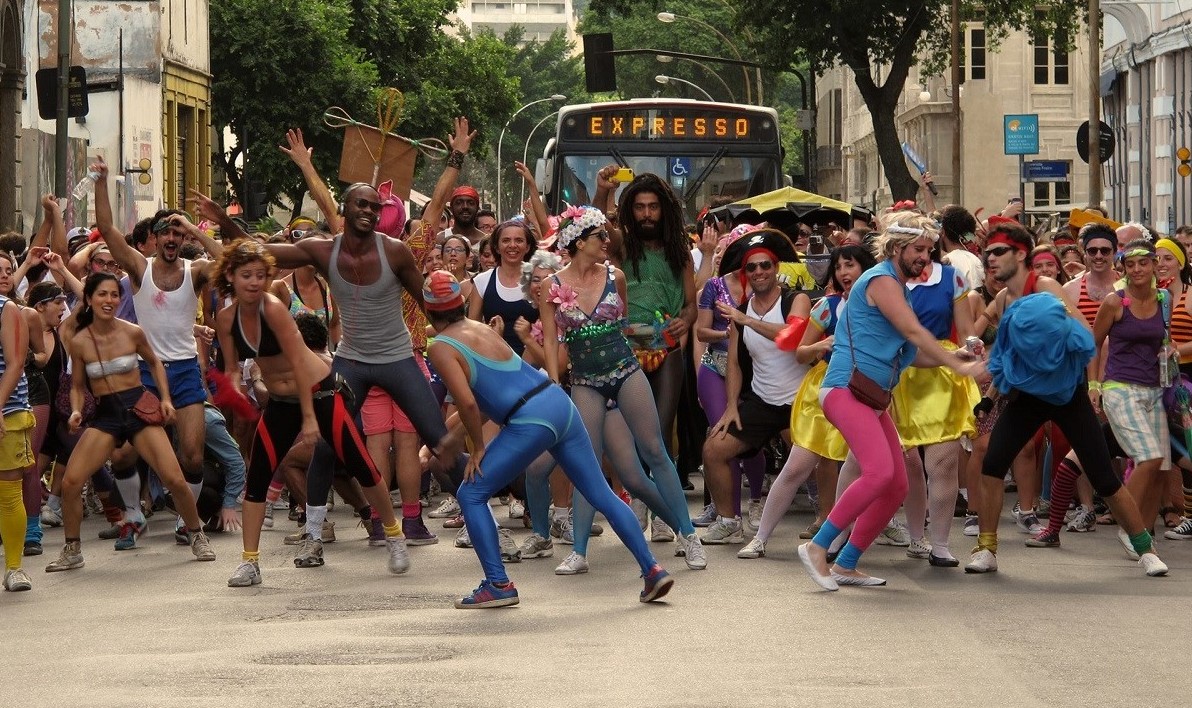everything you need to know for 2025

The most famous party in the world, the Rio Carnival — Carnaval in Portuguese — is an eight-day extravaganza of fabulous floats, music and dance, partying and performance that connects the residents of the city, and lucky visitors, to the city’s Afro-Portuguese history and traditions. To the insistent beat of drums, as many as two million people turn up at each day’s events as the city’s samba schools compete for prizes and pride. Carnival means “farewell to flesh” but for most people this world-famous spectacular means “hello, fun!”
Become a subscriber and, along with unlimited digital access to The Times and The Sunday Times, you can enjoy a collection of travel offers and competitions curated by our trusted travel partners, especially for Times+ members
When is it?
Dancers from Imperatriz Leopoldinense samba school
GETTY IMAGES
As the dates for Lent change according to the lunar calendar, the carnival dates vary year to year. The main event always runs from the noon of the Friday before Ash Wednesday to the following Monday. As well as this four-day festival, there’s a Winners’ Parade on the following Saturday (by which time Lent has actually begun). In 2025, the dates are February 28 to March 8.
Why is Rio’s carnival the biggest of all?
A samba parade in Rio
ALAMY
Rio began its love affair with carnival in 1723, when Portuguese immigrants from the Azores, Madeira and Cabo Verde introduced a Shrovetide parade called the Entrudo. At the time Salvador was Brazil’s capital but Rio was a major port city. The carnival took off from the 1920s, when neighbourhood samba schools were established and started to compete in elaborate costumes. There are more than 70 samba schools, including 12 “elite” schools, comprising between 2,500 and 3,500 dancers and performers. The first official Rio Carnival parade took place in 1935 at a city-centre square called Praca Onze — 30 years later it was moved to Rua Marques de Sapucai, off the main Avenida Presidente Vargas.
How to do it?
A performance at the Sambadrome in 2024
GETTY IMAGES
Ticket-holding spectators watch the official parade in the Sambadrome, a purpose-built 90,000-capacity stadium designed in 1983 by Oscar Niemeyer, best known for his futuristic buildings in Brasilia. It sits on Marques de Sapucai in Rio’s city centre, six to eight miles north of Ipanema and Copacabana, where most hotels are located. The spectacular processions take place at night, with the Sambadrome opening at about 5pm and non-stop performances from 10pm through to 4am or as late as 6am the following morning. The main website (riocarnaval.org) is in English and has plenty of information.
Rio locals — known as cariocas — as well as tourists celebrate Carnival in street parties and unofficial events all over the city, including formal balls, masquerades and open-air dance parties with music played by street bands known as blocos or bandas. Among the largest regular street parties are Afroreggae in the centre, Carmelitas in Santa Teresa and Bloco do Barbas in Botafogo. Information about blocos and bandas is published on riocarnival.org and your hotel concierge will be able to recommend the closest.
It’s possible to experience Carnival on an independent holiday and there are direct flights from London to Rio. Hotels fill up so it pays to plan about 11 months in advance; some people start planning their next carnival as soon as one is over. Travelling with a tour firm takes the pressure of arranging all of the above — and you’d have Atol backing for your holiday if there was a cancellation. In addition, a tour operator could also be helpful if you plan on travelling onward to another part of Brazil.
What else is there to do in Rio?
The adjacent Ipanema and Leblon beaches
GETTY IMAGES
As well as the famous beaches of Ipanema, Leblon and Copacabana, Rio has excellent art galleries and museums such as the MAR (Rio Museum of Art) and Museu de Amanha (Museum of Tomorrow), world-class restaurants — we love Aprazível and Oteque — and a thriving nightlife. The quaint seaside resort of Buzios is just north of Rio; the verdant, beach-lined Costa Verde — ideal for a driving holiday — lies to the south. Rio’s two airports have daily flights to all parts of the country.
• Best things to do in Rio de Janeiro
• Brazil’s best beaches that aren’t Copacabana
How much is it?
A Mocidade samba school dancer at the Sambadrome
GETTY IMAGES
There are seven categories of tickets available for each of the five days: Grandstands, Allotted Chairs, Front Box, Covered Box, Folia Tropical (an area beside the procession with its own open bar, buffet and DJ sets), Super Folia (a third-floor VIP space with good views and champagne) and the Camarote Maravilha (a new VIP space for just 500 attendees). The posher tickets include transport from Leblon, a popular high-end beach area. Show prices range from £32 to £1,235 per day for 2025; the opening Friday has the most economical prices. A certified third-party site, rio-tickets.com is user-friendly when it comes to tickets and packages, Booking six months in advance is recommended — the cheaper tickets sell out but there are usually a few high-category seats available up to the week before carnival kicks off.A holiday package, including international flights and Carnival tickets, might range from £2,500 to £7,000-plus, depending on the accommodation and itinerary.
What should I pack?
Carnival-goers in the Santa Teresa neighbourhood
ALAMY
Take a safe money belt or some way of carrying cash and cards while out and about. You might also want to store your phone somewhere other than your shirt or skirt pockets. Pack a water bottle, sun-block, sunglasses, a hat and light, comfortable casual clothes. Carnival falls in summer and Rio can get very hot. Cariocas often wear flip-flops but trainers are probably wiser for all-day/night partying.
What kind of fitness level do I need?
Brazilians of all ages, shapes and sizes enjoy Carnival. Anyone reasonably fit will be fine. There is no obligation to dance without taking a break and if you’re in the Sambadrome you’ll be able to sit down.
Is Carnival safe?
A crowd of carnival revellers being cooled
ALAMY
Brazil has high levels of street crime, much of it low-level pickpocketing. People wear casual clothes and beachwear for Carnival, so dress down and avoid wearing expensive watches or sunglasses. Ditto eye-catching cameras and phones. Criminals target drunken revellers. The Foreign Office advice is: “You should be vigilant, in particular before and during the festive and carnival period.” It warns against going on the Corcovado walking trail up to the Christ the Redeemer statue, where armed robberies have been reported.
Make it happen
1. Rio Carnival experience, Intrepid
The Christ the Redeemer statue overlooking Rio de Janeiro
GETTY IMAGES
Enjoy the parade of floats, musicians and dancers in the Sambadrome, learn dance steps at a local club and take part in a bloco street party; in your downtime, visit the Christ the Redeemer statue and climb the Morro Dois Irmaos for a spectacular view. Five nights’ B&B, one dinner and bus transfers are included.
2. Chile, Argentina and Brazil, Rio Carnival winners’ parade, Just You
Cable cars at San Cristobal Hill in Santiago, Chile
GETTY IMAGES
Enjoy the winners’ parade on the final Saturday as the culmination of a border-hopping 13-day tour through Chile, Argentina and Brazil, with visits to Santiago, Mendoza, Buenos Aires and the Iguazu Falls. Twelve nights’ B&B accommodation, all domestic transfers, tour leader and all flights are included.
3. Rio Carnival and Amazon voyage, Azamara
A three-toed sloth in the Amazon
GETTY IMAGES
Azamara Cruises’ 25-night Rio Carnival and Amazon voyage is timed to dock in Rio for the big party on the main weekend. The cruise also includes Buenos Aires, Montevideo, Macapa and Santarem on the Amazon River. All meals, onboard entertainment and gratuities are included. The Sambadrome is an optional excursion.
4. Rio Carnival: sequins and the Sambadrome (hostel experience), G Adventures
A member of Salgueiro samba school at the Sambadrome
GETTY IMAGES
If you’re looking to get right down into the colourful thick of things, this compact six-day group trip includes a tour of Rio and tickets to the Sambadrome. The allotted seats allow a great view over the parade, and you won’t need to worry about a thing — a local tour guide will be on hand to look after you. Five nights’ B&B hostel accommodation and local transport are included.
5. Rio Carnival holiday, Journey Latin America
Traditional houses in Paraty, Brazil
GETTY IMAGES
Combine a samba workout at the Rio Carnival with visits to the jungle-clad Corcovado and Sugar Loaf Mountains, with stays in Buzios, a tranquil seaside haven outside the city, and the colonial town of Paraty. Nine nights’ B&B accommodation and local transfers are included.
journeylatinamerica.com
6. Brazil’s carnival celebrations: Rio de Janeiro and Iguazu Falls, Audley
See the sights in Rio, including charming Santa Teresa, experience Carnival from one of the non-numbered grandstands, and visit both sides of the Iguazu Falls with a private guide before a final stop in Sao Paulo — Brazil’s teeming cultural and economic powerhouse. Seven nights’ B&B accommodation, transfers and all flights included.
audleytravel.com
• Best hotels in Brazil
• A guide to Iguazú Falls: when to go, how to visit and what to expect
Sign up to the Times Travel newsletter for weekly inspiration, advice and deals here
link

















:max_bytes(150000):strip_icc()/TAL-lead-image-SPEAKPORTUGUESE0325-f7e3c5851da243fca2fd8e01de25f911.jpg)



